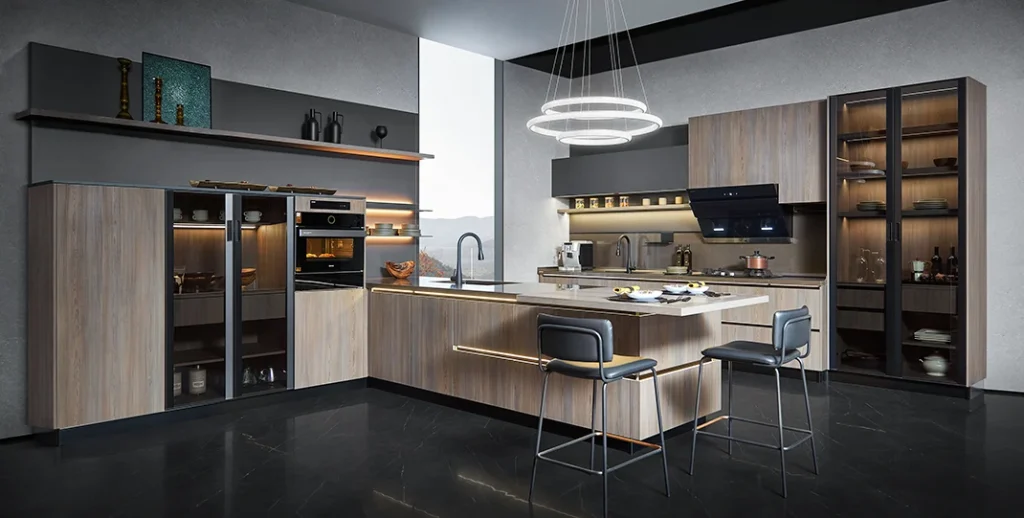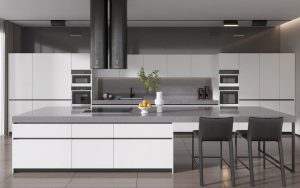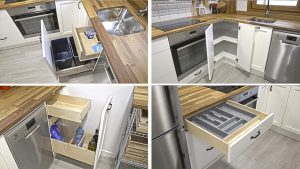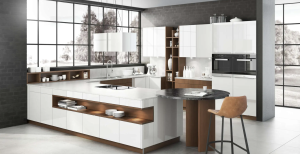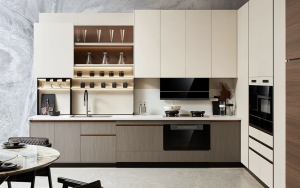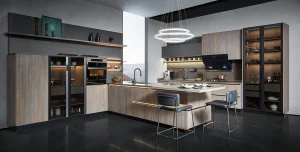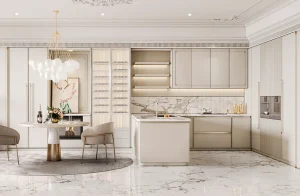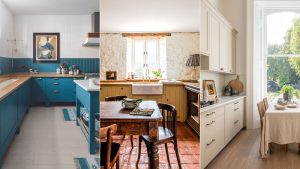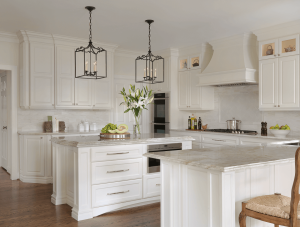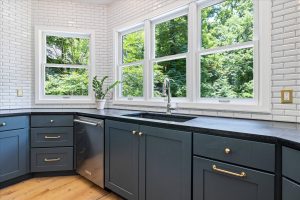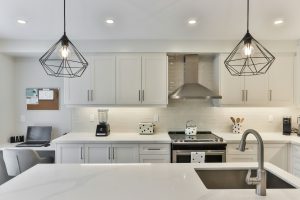European cabinets are known for their sleek design, functionality, and modern aesthetic, making them a popular choice for contemporary kitchens and living spaces. However, with so many styles, materials, and finishes available, choosing the right European cabinet for your home can be a daunting task. This guide will help you navigate through the key factors to consider when selecting the perfect European cabinets for your space.
1. Consider Your Kitchen or Room Layout
Before choosing your cabinets, take a close look at your kitchen or room layout. European cabinets are often used in modern, open-concept designs, which means they work best in spaces where simplicity and functionality are key.
Key Considerations:
- Cabinet Configuration: Think about the storage needs for your space. Do you need more lower cabinets, or would wall-mounted cabinets be a better fit for your layout?
- Island or Wall Units: European cabinets are perfect for kitchen islands or seamless wall units, which blend into the architecture for a clean, minimalist look.
Tip: Measure your space carefully and map out where each cabinet will go. European frameless cabinets maximize storage, making them a great fit for smaller kitchens.
2. Select the Right Material
European cabinets come in a variety of materials, each offering a different look and feel. The material you choose will impact the durability, appearance, and maintenance of your cabinets.
Popular Materials:
- MDF (Medium-Density Fiberboard): A cost-effective and durable option, often used for painted or high-gloss finishes.
- Plywood: Strong and resistant to moisture, plywood cabinets offer a natural wood look or can be veneered with other finishes.
- Laminate: Perfect for a modern, easy-to-maintain kitchen, laminate cabinets are available in a wide range of colors and textures.
- Acrylic: For a high-gloss, reflective finish, acrylic cabinets offer a sleek, contemporary aesthetic with a durable and easy-to-clean surface.
Tip: Consider the level of maintenance required for each material. If you prefer a low-maintenance option, laminate or acrylic might be the best choice for your home.
3. Choose the Right Finish
The finish of your European cabinets will determine the overall look and feel of your kitchen or room. European cabinetry typically features clean lines and smooth surfaces, so your choice of finish is essential to achieving the desired aesthetic.
Common Finish Options:
- High-Gloss: For a modern, reflective surface that adds light and openness to the room.
- Matte: A subtle, soft finish that works well in minimalist or Scandinavian-inspired spaces.
- Wood Veneer: Offers the warmth and texture of natural wood while maintaining the sleek design associated with European cabinetry.
Tip: If you have a smaller kitchen or living space, high-gloss finishes can make the room appear larger by reflecting light. Matte finishes, on the other hand, provide a more understated, sophisticated look.
4. Focus on Functionality
European cabinets are designed with functionality in mind, prioritizing storage solutions and ease of use. When choosing cabinets, think about your storage needs and how different cabinet configurations can help you maximize space.
Storage Features to Consider:
- Soft-Close Drawers: A standard feature in European cabinets, soft-close drawers ensure a quiet and smooth operation.
- Pull-Out Shelves: Ideal for accessing items in the back of the cabinet without having to reach inside.
- Corner Solutions: European kitchens often use smart corner storage solutions like lazy Susans or pull-out corner units to make the most of every inch of space.
- Integrated Lighting: Many European cabinets come with integrated LED lighting, adding both functionality and style to the kitchen.
Tip: Choose cabinets that align with your daily habits and organizational needs. If you like to keep things tidy and easily accessible, opt for cabinets with built-in organizational features like drawer dividers or pull-out trays.
5. Select the Right Hardware
The hardware on your cabinets, such as handles and knobs, can greatly influence the overall look and functionality. In European designs, minimalist hardware or even handle-less designs are common, giving the cabinetry a clean, modern aesthetic.
Popular Hardware Options:
- Handle-less Cabinets: These cabinets feature a push-to-open mechanism or recessed grooves, providing a completely streamlined look.
- Minimalist Handles: Small, simple handles in matte black, stainless steel, or brushed brass add a modern touch without drawing too much attention.
- Integrated Handles: Handles built into the edge of the door maintain the sleek design while offering a functional grip.
Tip: For a true European look, opt for handle-less cabinets or integrated handles that keep the design clean and uninterrupted.
6. Set a Budget
European-style cabinets can range widely in price, depending on the materials, finishes, and customizations you choose. It’s important to set a budget before you start shopping so you can focus on options that fit your price range.
Factors That Influence Cost:
- Materials: Solid wood cabinets will be more expensive than MDF or laminate.
- Custom Features: Soft-close drawers, integrated lighting, and specialized storage solutions may add to the cost.
- Installation: European cabinets require precise installation, often by professionals, which can also increase the budget.
Tip: Prioritize the features that matter most to you, such as soft-close drawers or a high-end finish, and allocate your budget accordingly.
7. Think About Longevity and Maintenance
European cabinets are known for their durability and low-maintenance designs, but the level of care required can vary depending on the material and finish you choose.
- Laminate and Acrylic: These materials are easy to clean and resist stains, making them ideal for busy households.
- Wood Veneer: While beautiful, wood veneer may require more maintenance and care to protect against scratches and moisture.
Tip: If you have young children or frequently cook at home, choose materials that are resistant to wear and easy to clean, like laminate or high-gloss finishes.
Conclusion: Finding the Perfect European Cabinet for Your Home
Choosing the right European cabinet for your home comes down to balancing style, functionality, and budget. Whether you’re aiming for a sleek, minimalist kitchen or a warm, contemporary living space, European cabinets offer a wide range of options to fit your needs. Consider the layout of your room, the materials and finishes that suit your lifestyle, and the storage solutions that will keep your space organized and efficient.
For a modern, streamlined look that maximizes space and functionality, European-style cabinets are a fantastic choice that will stand the test of time. Make sure to consult with a professional to ensure proper installation and enjoy your newly upgraded space!
